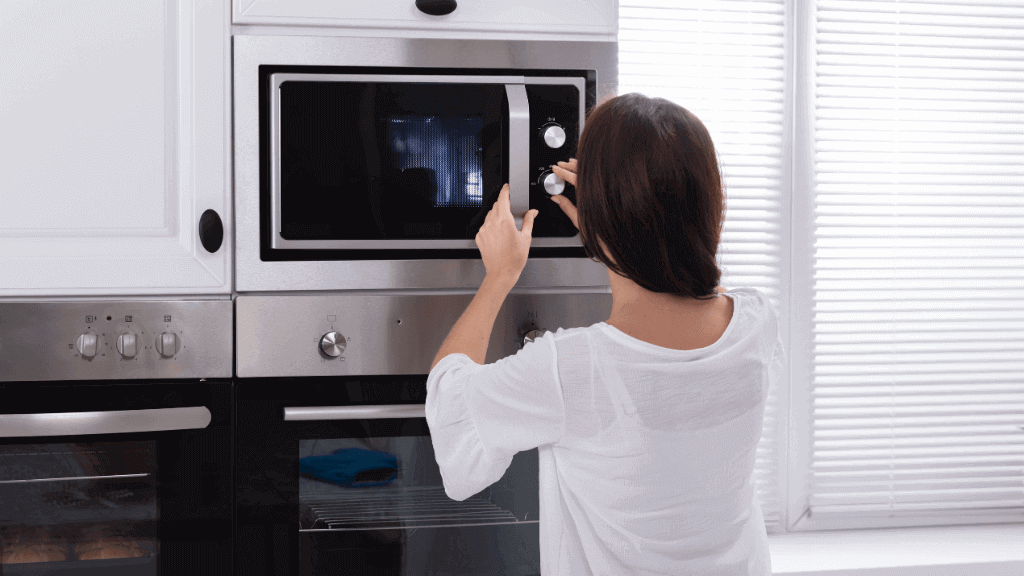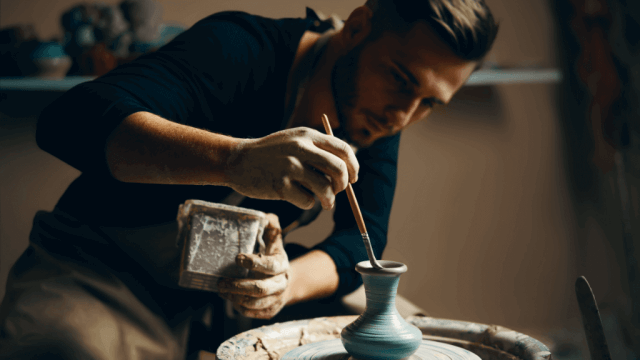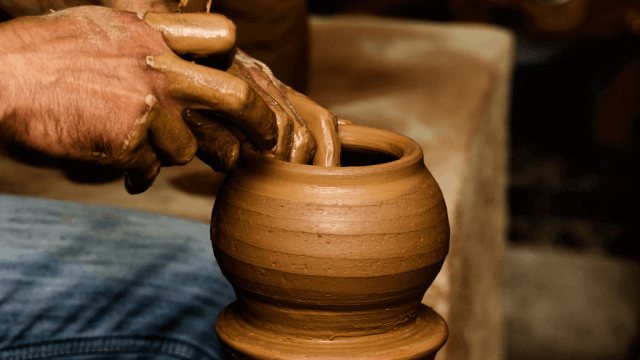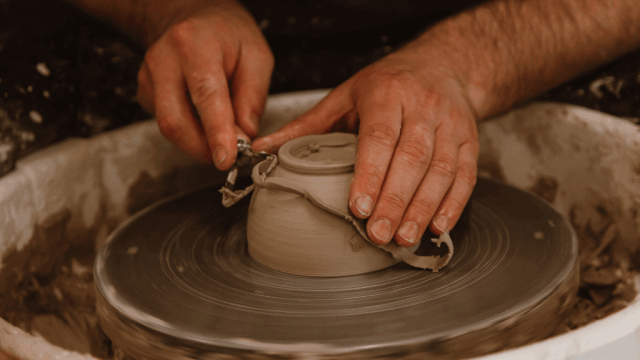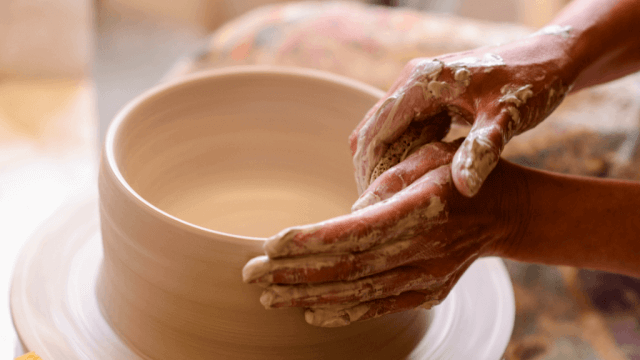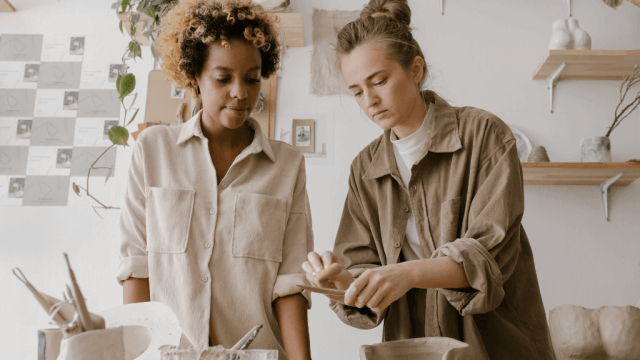Yes, most pottery is microwave-safe, but ensure it is free from metallic components, has a consistent thickness, and is not damaged to avoid breakages or overheating issues.
Factors to Consider When Microwaving Pottery
While most pottery is microwave-safe, certain factors are crucial to ensure the pottery’s safety and effectiveness when heating food. These factors include metallic components, a consistent thickness, and the absence of damage.
Avoid Metallic Components
Metallic components in pottery can cause sparks and damage your microwave. Gold and silver accents, lusters, and trim should be avoided. Also, make sure the glaze does not contain metal as some metallic glazes may appear non-metallic to the naked eye.
Ensure Consistent Thickness
Pieces with even, consistent thickness will heat more evenly and avoid thermal shock. Thermal shock occurs when a piece of ceramics rapidly changes temperature, causing it to crack or break. Thus, avoiding sharp transitions in thickness is crucial for the safety of your pottery when microwaving.
Check for Damage
Before microwaving, examining your pottery for any chips, cracks, or other imperfections is essential. These weak spots can cause the pottery to break in the microwave or contribute to the risk of thermal shock.
Using Safe Pottery in a Microwave
Pottery types free of metallic components, of consistent thickness, and in good condition are ideal for microwaving. For instance:
Stoneware
High-fired and relatively dense, stoneware is a good choice for microwaving. Its durability and resistance to thermal shock make it an excellent candidate for heating food.
Porcelain
A high-fired ceramic with exceptional strength, porcelain is another suitable option for microwaving. Make sure it doesn’t have any metallic accents or decorations.
Earthenware
While safe for microwaving, earthenware must be used cautiously, as it is more porous and prone to thermal shock. Ensure it has a consistent thickness and is free of any damage.
When the right precautions are taken, microwaving pottery is both safe and practical. Keep an eye out for metallic components and damage, and ensure your pottery is of consistent thickness. By doing so, you’ll be able to enjoy your microwaved meals safely and conveniently.
Pottery Coating and Glazing
Another factor that influences microwave safety is the type of coating or glaze applied to the pottery. Not all glazes are microwave-safe, and some may contain hazardous materials that can leach into the food when heated. Opt for food-safe, lead-free glazes to avoid any health risks.
Handling Hot Pottery
Even if the pottery is microwave-safe, it may still become hot to the touch when heated. Use caution and oven mitts or a thick towel when removing the pottery from the microwave to avoid burns. Allow the piece to cool before handling without protection.
When In Doubt, Check With the Manufacturer
If you aren’t sure whether a specific pottery item is microwave-safe or not, consult the manufacturer or artist who created the piece. They can provide accurate information about the materials used and the pottery’s microwave compatibility based on their knowledge and experience.
Alternative Heating Methods
If your pottery is not microwave-safe, there are other methods for heating your food, such as using an oven or stovetop. Be aware that different types of pottery may have specific heat-safe or oven-safe guidelines to follow. Always refer to the manufacturer’s instructions for the best results.
Microwave-Safe Labels on Commercial Pottery
Many commercially produced pottery items come with labels or markings indicating that they are microwave-safe. Look for these labels or documentation from the manufacturer to make a confident decision when using these items in a microwave.
Caring for Your Microwave-Safe Pottery
To prolong the life of your microwave-safe pottery and maintain its safety, clean and store it properly. Avoid using abrasive cleaners that can scratch or damage the pottery’s surface. Similarly, storing your pottery in a safe place, away from the risk of chipping or cracking, is essential to keep your pieces intact for future use.
Frequently Asked Questions
Here is a list of frequently asked questions related to microwaving pottery. These will help you gain a better understanding of the process and make informed decisions about using pottery in a microwave.
How do I know if my pottery is microwave-safe?
To determine if your pottery is microwave-safe, check for the absence of metallic components, consistency in thickness, and no existing damage. Also, look for microwave-safe labels or consult the manufacturer if you’re unsure.
Can I microwave pottery with metallic accents?
No, you should not microwave pottery with metallic accents, as it can cause sparks, damage your microwave, or even make a small explosion.
Is it safe to heat food in pottery in the oven instead of a microwave?
Yes, most pottery is oven-safe, but ensure no metallic components are present and follow the manufacturer’s guidelines for the maximum temperature and other precautions.
Why is it important for pottery to have a consistent thickness when microwaved?
Consistent thickness helps prevent thermal shock, which occurs when a ceramic piece rapidly changes temperature and can cause it to crack or break, especially in the microwave.
How do I clean and maintain my microwave-safe pottery?
Use non-abrasive cleaners to avoid scratching or damaging the surface of the pottery. Store it in a safe place where it won’t be exposed to potential chipping or cracking. Regularly inspect for damage before using in the microwave.
